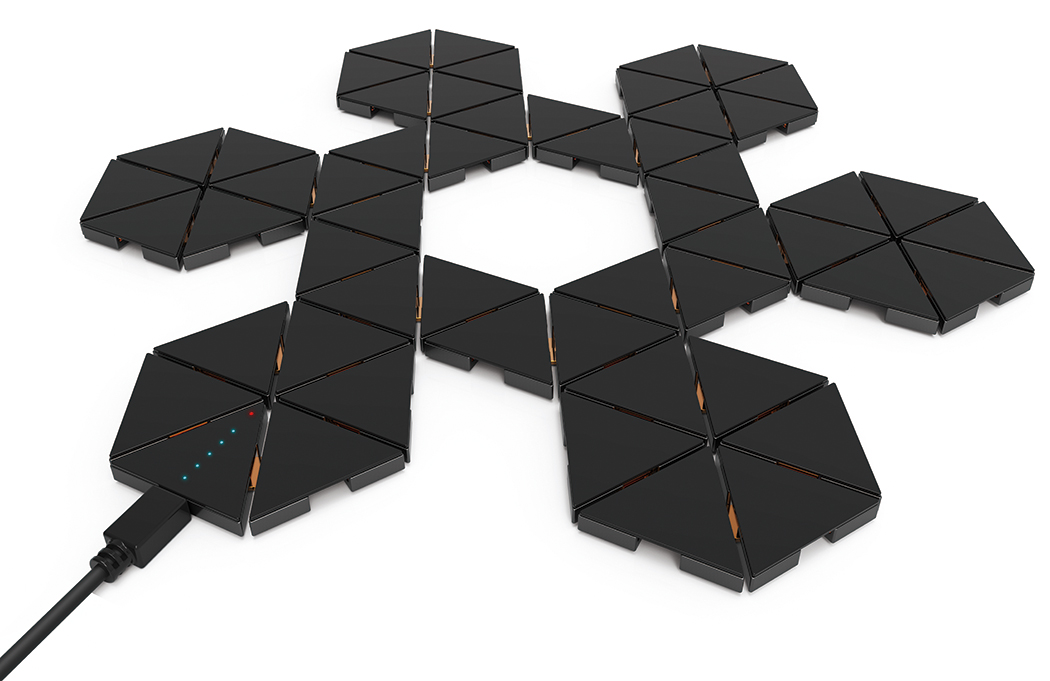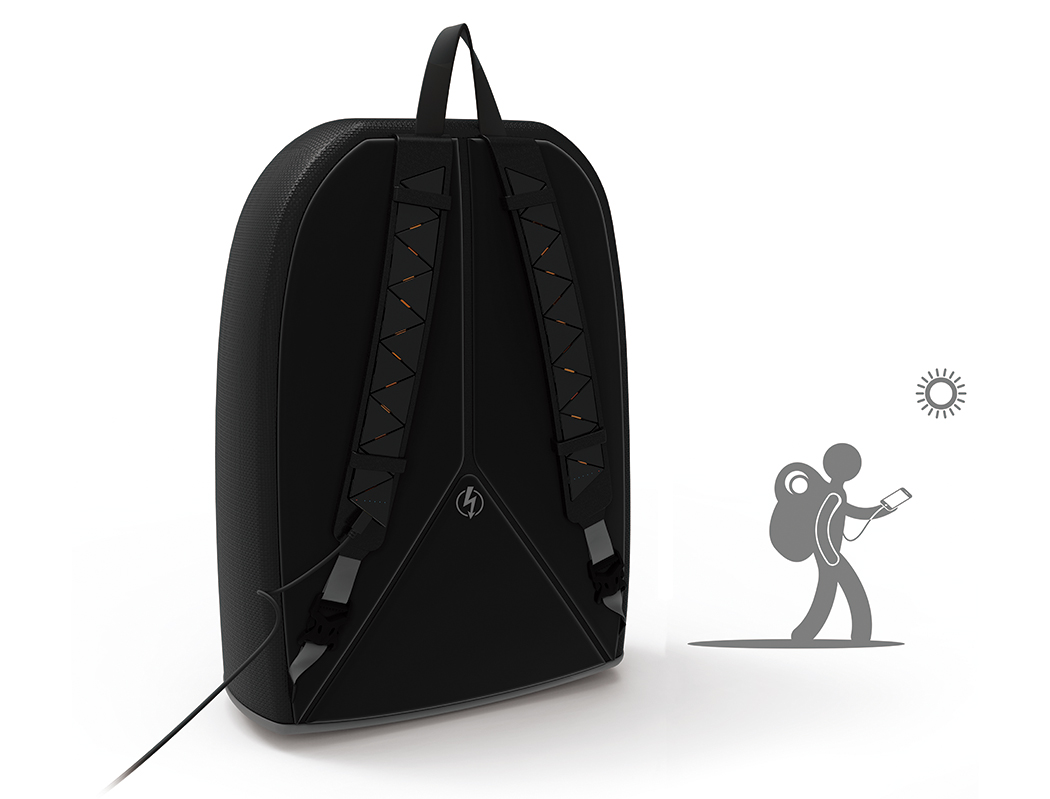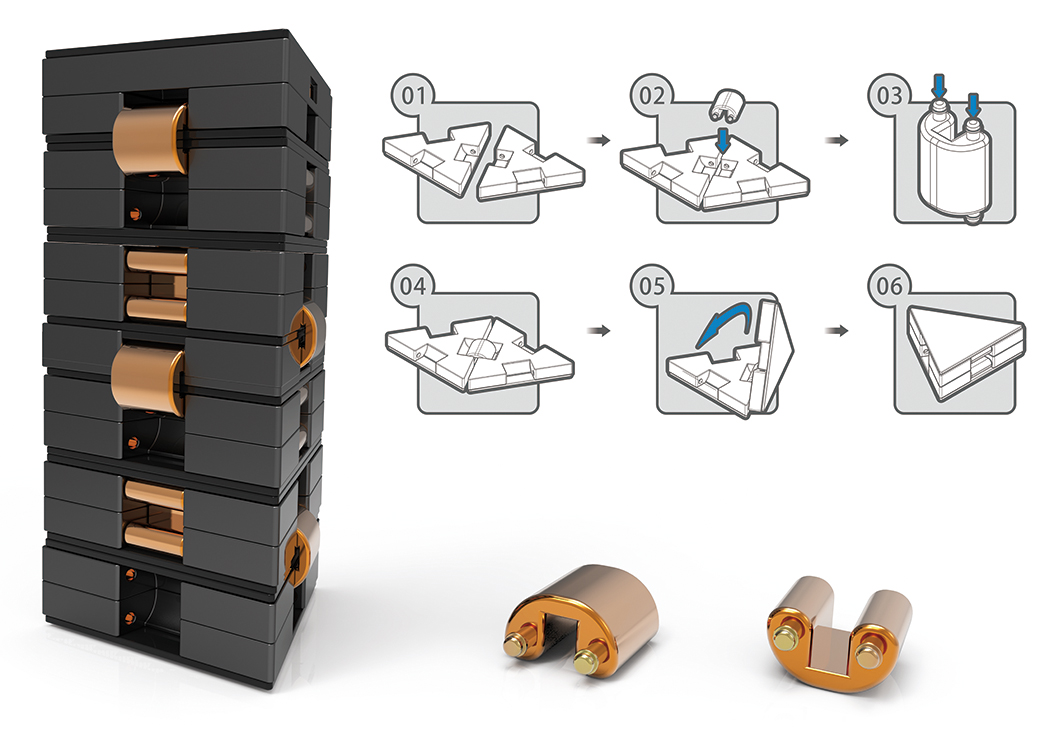
Apple iPhone 8 and further models are reaching for the next in technological edge. The company’s enhancements may not be met with the full enthusiasm that they expect.However, the innovation keeps on...

It’s strange that harnessing solar energy hasn’t picked up in a crazy speed yet. Something tells me the fossil fuel market is notoriously difficult to get rid of… or in an ideal world, the Portable Solar Module system would have been a reality by now.
These tiny solar panels can be linked to one another, forming a larger solar panel layout and effectively harnessing more energy. The speciality of the Portable Solar Module system is the fact that the solar panels are highly compact. Their triangular layout allows them to be arrayed in a variety of ways too. A small connector bridge snaps between two individual panels, allowing them to hinge all the way to 180 degrees!
Designers: Yeh ShuHung & Hu SiQi.


As gorgeous as huge, expensive monitors are, most situations just don't call for the inches or wallet-dents associated with today's luxury screens. With this in mind, and barely a breath after outing its $299, 27-inch LED offering, ViewSonic is back with two budget displays from the VA12 series. First up is the VA2212m-LED, which rocks a 1080p widescreen, 21.5-inch panel, 10,000,000:1 contrast Ratio, DVI and VGA inputs, as well as a pair of 2W integrated speakers. Its little brother the VA1912m-LED shares most of the same genes, but with an 18.5-inch, 1,366 x 768 resolution screen. Running with ViewSonic's eco-friendly theme, both mercury-free LED monitors also boast the eco-mode feature for low power consumption and a longer life. If either of the new displays are grabbing your attention, you'll be able to pick up the $149 VA2212m-LED imminently, with the $125 VA1912m-LED hitting North American retailers in mid-August.
Continue reading ViewSonic announces a duo of budget-friendly LED monitors
Filed under: Displays
ViewSonic announces a duo of budget-friendly LED monitors originally appeared on Engadget on Fri, 27 Jul 2012 17:33:00 EDT. Please see our terms for use of feeds.
Permalink | TechPowerUp | Email this | Comments
TechPowerUp | Email this | Comments It's a ritual: we publish a review of a laptop with a 1366 x 768 display, the best-rated comment is from someone crying out for 1600 x 900 -- nay, 4K resolution. If you're in the latter camp, you're going to be disappointed by even this article, but for those of you who've merely been craving something, anything crisper than mere HD, we have some hope: Samsung is mulling the idea of a 13-inch, PLS display with a 1920 x 1080 pixel count. Earlier today a company rep told a group of reporters that the PC division is considering a 1080p panel of that size, which would be unusual, to say the least. The outfit isn't ready to make any promises, much less commit to an ETA, though we can't say we'd be surprised if the company made such a display for its 13-inch laptops first -- after all, for instance, some of its 13-inch panels make use of IPS-like PLS technology, whereas its 15-inch ones don't yet. We'll let you decide if that's even necessary -- both the 13- and 15-inch Series 9 already have 1600 x 900 resolution -- but suffice to say, the company has a good track record of squeezing in extra pixels when other ultraportable makers don't.
Samsung considering a 13-inch, 1080p, PLS panel, display snobs get their hopes up originally appeared on Engadget on Wed, 16 May 2012 19:14:00 EDT. Please see our terms for use of feeds.
Permalink | | Email this | CommentsWhen we reviewed the 15-inch Samsung Series 9, we found very little to complain about, save for the narrow viewing angles and the fair-weather trackpad. Turns out, Samsung at least agrees with the first part. In a show of candor, Raymond Wah, VP of PC product strategy, told a group of reporters, "We can make improvements in terms of the viewing angle." That's not surprising, given that Samsung's homegrown 15-inch display doesn't currently make use of the same IPS-like PLS technology as the panel used in the 13-inch Series 9. It would seem, then, that it's occurred to Samsung to develop one, though company reps declined to say when we might see a 15-inch Series 9 with such a panel in tow.
For now, anyway, the outfit is giving itself some credit for the laptop's relatively dense 1600 x 900 pixel count (and rightfully so!). Interestingly, Wah's comments come at a time when MacBook Pro rumors are starting to flow fast and furious, and a Retina display is looking like a fair possibility. As to whether Samsung will ever produce a 4K laptop display of its own, Wah declined to comment, but he did note that right now there isn't enough content optimized for that higher resolution, and that such screens would be costlier to produce. Until all that changes, we have to admit we're pretty pleased with the Series 9's resolution too -- after all, anything's better than plain old HD.
Samsung exec admits the 15-inch Series 9 could benefit from better viewing angles originally appeared on Engadget on Wed, 16 May 2012 11:41:00 EDT. Please see our terms for use of feeds.
Permalink | | Email this | CommentsHow do you develop an OLED display that gives a 360-degree perspective? Toss six 1.25-inch panels into a plastic cube, then turn it as you see fit. That's an overly simplistic explanation for the six-sided display on hand at the MIT Media Lab today, which is quite limited in its current form, but could eventually serve an enormous variety of applications. Fluid Interfaces Group Research Assistant Pol Pla i Conesa presented several such scenarios for his Display Blocks, which consist of 128 x 128-pixel OLED panels. Take, for example, the 2004 film Crash, which tells interweaving stories that could be presented simultaneously with such a display -- simply rotate the cube until you land on a narrative you'd like to follow, and the soundtrack will adjust to match. It could also go a long way when it comes to visualizing data, especially when in groups -- instead of virtually constructing profiles of individuals who applied for a slot at MIT, for example, or segments of a business that need to be organized based on different parameters, you could have each assigned to a cube, which can be tossed into an accepted or rejected pile, and repositioned as necessary.
Imagine having a group of display cubes when it comes time to plan the seating chart for a reception -- each cube could represent one individual, with a color-coded background and a name or photo up top, with different descriptive elements on each side. The same could apply to products at monstrous companies like Samsung or Sony, where executives need to make planning decisions based on product performance, and could benefit greatly from having all of the necessary information for a single gadget listed around each cube. On a larger scale, the cubes could be used to replace walls and floors in a building -- want to change the color of your wallpaper? Just push a new image to the display, and dedicate a portion of the wall for watching television, or displaying artwork. You could accomplish this with networked single-sided panels as well, but that wouldn't be nearly as much fun. The Media Lab had a working prototype on display today, which demonstrated the size and basic functionality, but didn't have an adjustable picture. Still, it's easy to imagine the potential of such a device, if, of course, it ever becomes a reality. As always, you'll find our hands-on demo just past the break.
Continue reading OLED Display Blocks pack six 128 x 128 panels, we go hands-on at MIT (video)
OLED Display Blocks pack six 128 x 128 panels, we go hands-on at MIT (video) originally appeared on Engadget on Tue, 24 Apr 2012 17:44:00 EDT. Please see our terms for use of feeds.
Permalink | | Email this | CommentsResearchers create incredibly thin solar cells flexible enough to wrap around a human hair originally appeared on Engadget on Wed, 04 Apr 2012 13:50:00 EDT. Please see our terms for use of feeds.
Permalink PhysOrg |
PhysOrg |  Nature Communications | Email this | Comments
Nature Communications | Email this | Comments